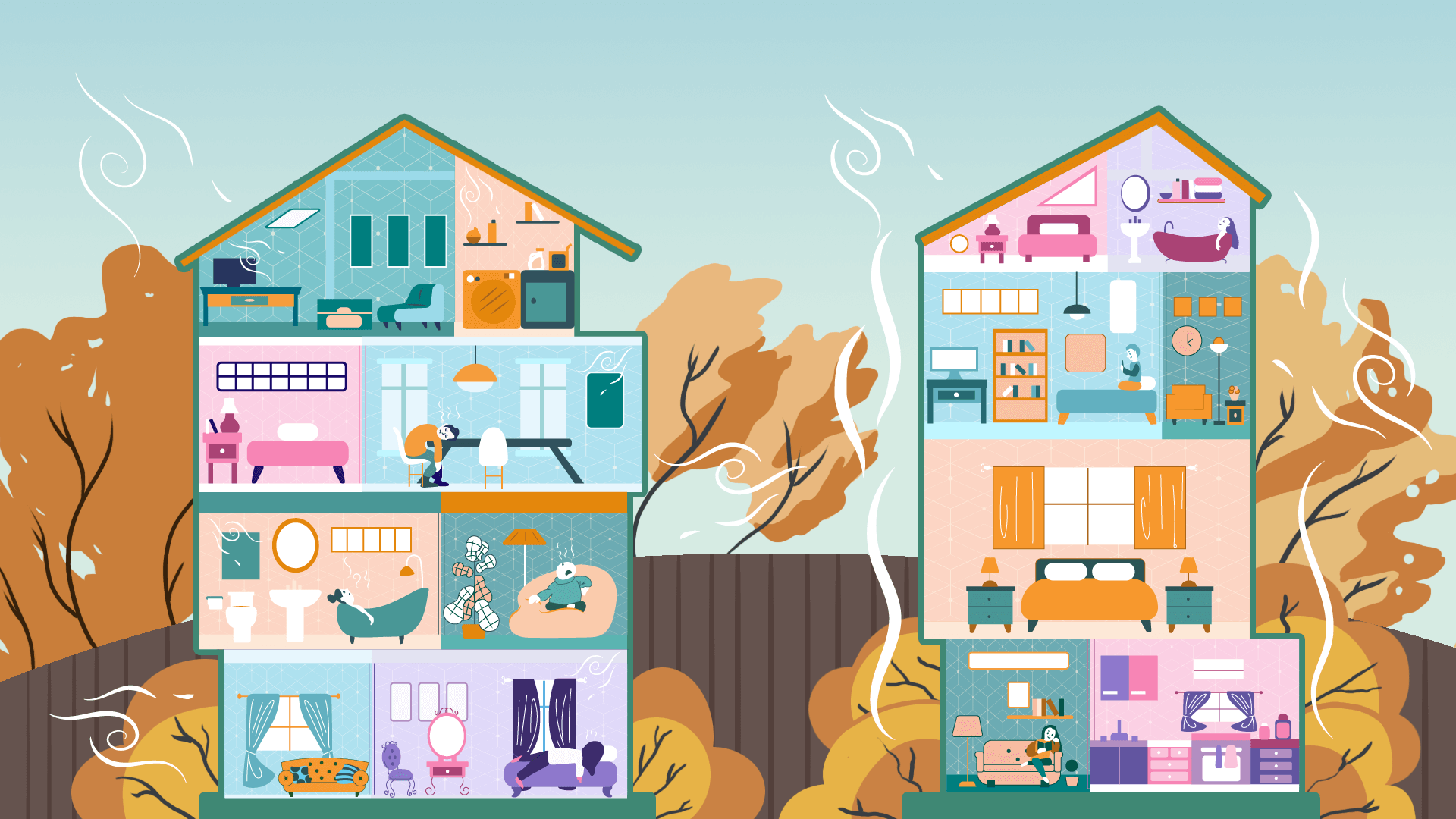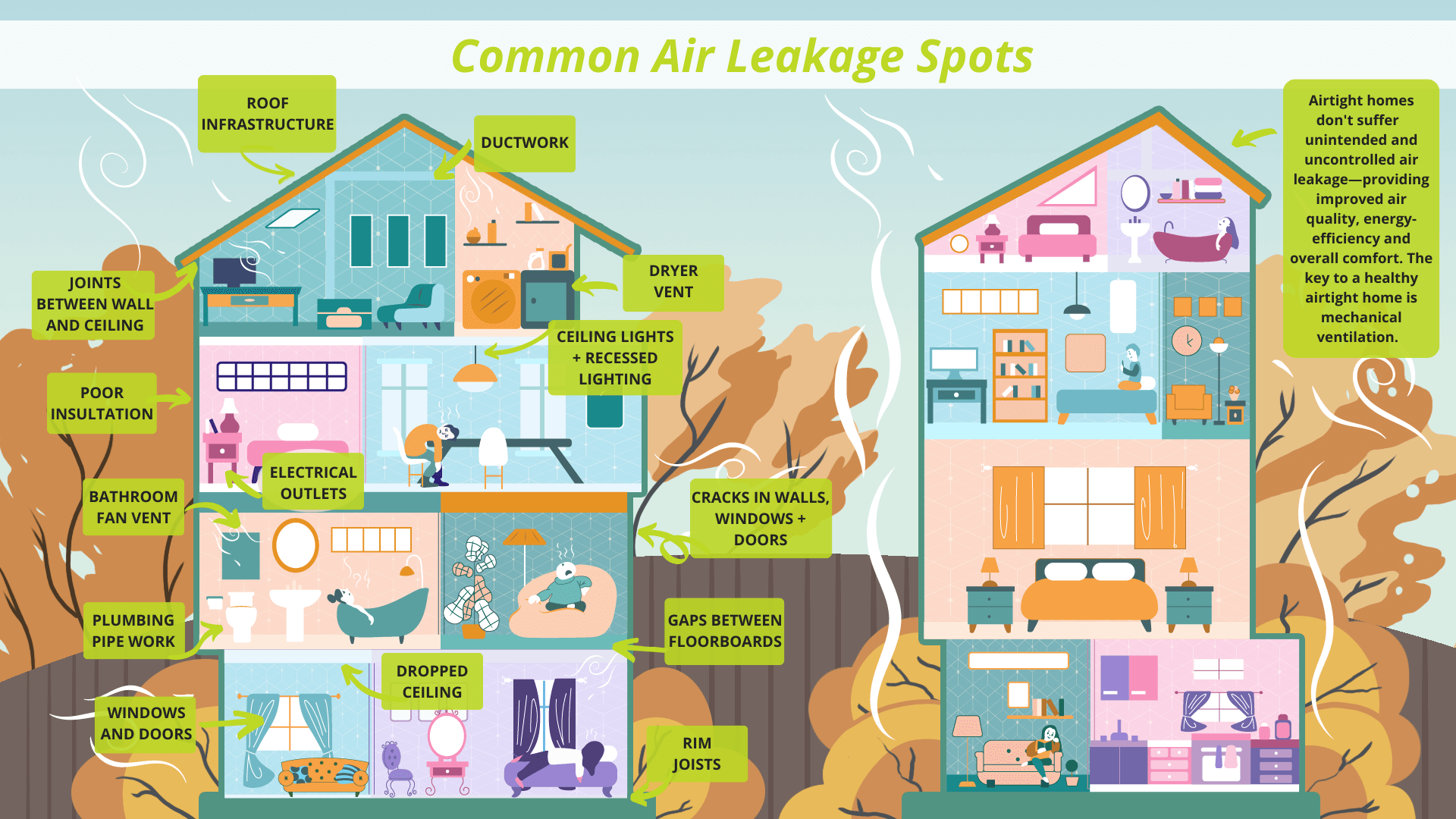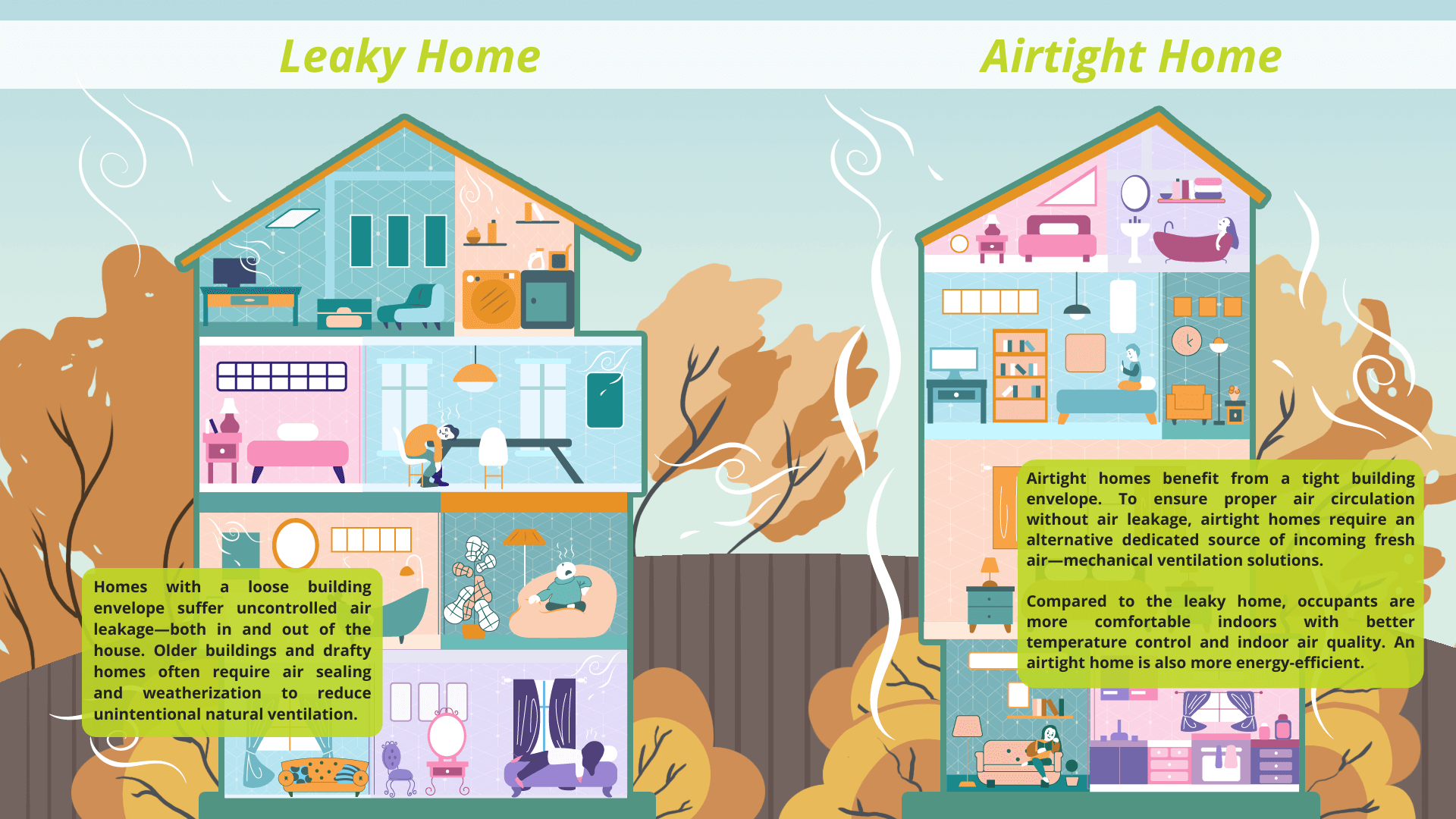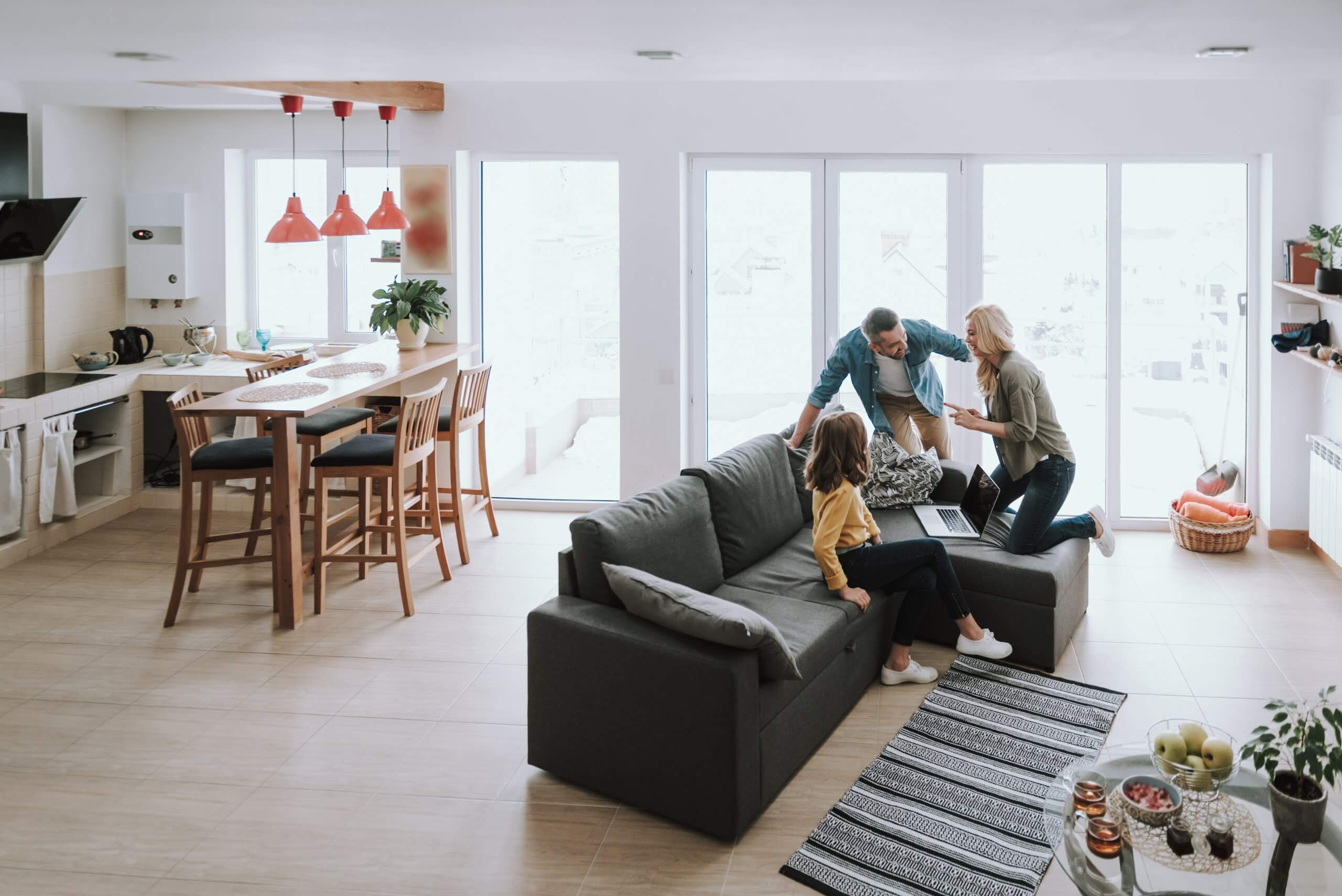Proper home ventilation is a cornerstone of good indoor air quality and healthy indoor living. And a critical aspect of ventilation is airtightness. In fact, how often you think about home ventilation, how you currently ventilate your indoor space and finding the best ventilation method all depend on the airtightness factor.
But what is airtightness? If you have no idea what an airtight home is, you’re certainly not alone. Even if knowledgeable about airtight construction, it’s important to also understand if and how it applies to your space! While proper airtight home ventilation is a nuanced topic, it’s absolutely crucial to understand in order to create a healthy home and ensure satisfactory indoor air quality and circulation.
What Is Airtightness?
Simply put, airtightness describes the degree of air leakage in and out of an indoor space. To fully explain how airtightness affects your home, your space’s indoor air quality and your utility bills, we need to explain a few more in-depth concepts and terms.
Building Envelope Defined
A building envelope is the continuous thermal and pressure barrier surrounding a given structure. It is the division between the indoor space and the outdoors. It is the physical separation between the conditioned indoor space and unconditioned outdoor surroundings. The building envelope is marked by the physical barriers that separate the inside from the outside. This includes walls, doors and doorways, windows, roofs, chimneys, external vents and the like. Generally, the building envelope comprises all of the materials and aspects that make up your home’s foundation.
Why the Building Envelope Is Important
The building envelope serves as the barrier between the indoors and the outdoors. It works best when closed tightly. This means purposefully eliminating or minimizing the number of unintended gaps, cracks and holes in the building envelope. This makes sense! Logically, something that works as a barrier and point of separation will function better without openings.
So, what exactly is an airtight building envelope?
What Is an Airtight Building Envelope?
Airtight construction prioritizes a tight building envelope that minimizes uncontrolled air movement in and out of the indoor space. As follows, airtightness is a measure of a space’s building envelope and the degree to which air permeation or air leakage is possible.
Airtightness affects infiltration and exfiltration, which are the fancy, official terms for the uncontrolled and unintentional movement of air either into or out of the structure. The bottom line is: air leakage should be minimized. A tight home limits this uncontrolled air movement, while a loose home does not.
Airtight construction and airtight building envelopes are considered the building priority today. This is thanks to several decades and code cycle changes resulting in more stringent residential building airflow requirements. Why? The top goal is improved energy performance. Minimizing air leakage and creating a tighter building envelope also creates a more energy-efficient system. Again, this makes sense. Less air leakage means expensive conditioned air (whether warmed or cooled) doesn’t seep outside prematurely. In fact, it’s one of the top benefits.


Benefits of a Tight Building Envelope
1. Cheaper Utility Bills
A leaky building envelope, often found in older homes, is hard on heating and cooling costs as the home system is forced to work harder to maintain the desired indoor temperature. On the contrary, a tighter building envelope keeps conditioned indoor air inside. This, in turn, reduces energy bills and saves you money! An airtight home retains heat during the winter and AC during the summer and doesn’t make your home system work overtime to provide a comfortable atmosphere.
2. More Comfortable Indoor Space
A tighter building envelope keeping conditioned air indoors longer and keeping unconditioned air out results in more consistent temperatures throughout your entire home. A well-regulated home is a more comfortable home.
3. Reduced Outdoor Air Pollution
Did you know that the majority of outdoor air pollution exposure occurs indoors? Where it’s then combined with additional indoor sources of air pollution. A tighter building envelope, which minimizes air leakage and the uncontrolled air exchange of indoor and outdoor air, also reduces how much outdoor air pollution makes its way indoors!
Disadvantages of a Tight Building Envelope
1. Lack of Natural Ventilation
The main disadvantage of a tight building envelope is that it greatly reduces natural ventilation. In other words, the infiltration and exfiltration which we explained are bad for your indoor space. How can both be true? While an influx of unfiltered uncontrolled outdoor air is harmful, so too is a lack of any incoming fresh air. A lack of ventilation results in stale air, leads to indoor contaminants taking longer to dissipate and increases indoor humidity levels as well as the risk of moisture damage.

The Airtight Home Ventilation Solution
At this point, it probably seems like a Catch-22. You either have an airtight home and save money with less outdoor air exposure but suffer stale indoor air, or have a loose drafty home that’s quite unruly and a waste of money. But the benefits of an airtight home far surpass the lack of benefits in a drafty home, especially when mechanical ventilation systems exist.
A mechanical ventilation solution is a whole-home system upgrade that provides a dedicated source and consistent influx of fresh, filtered, outdoor air. The system installs directly into your home’s existing HVAC system. Working in tandem with ductwork already in the home or a new sole duct source, it both supplies clean fresh outdoor air and exhausts polluted stale indoor air.
How To Make an Airtight House a Healthy Home
Proper ventilation is a critical caveat of airtight construction. Creating a tight building envelope is necessary, favorable and better than the alternative. However, airtight homes and buildings require a controlled, deliberate system or method to bring in fresh outdoor air.
Mechanical ventilation is that controlled deliberate fresh air system. It is the airtight home ventilation solution. Whole-home mechanical ventilation systems make an airtight house a healthy home.
Guarantee Good Home Ventilation
The importance of proper home ventilation cannot be understated. Nor can the many advantages of a mechanical ventilation system, both for airtight construction purposes and other IAQ reasons. Overall, you really can’t go wrong when upgrading to mechanical home ventilation.



